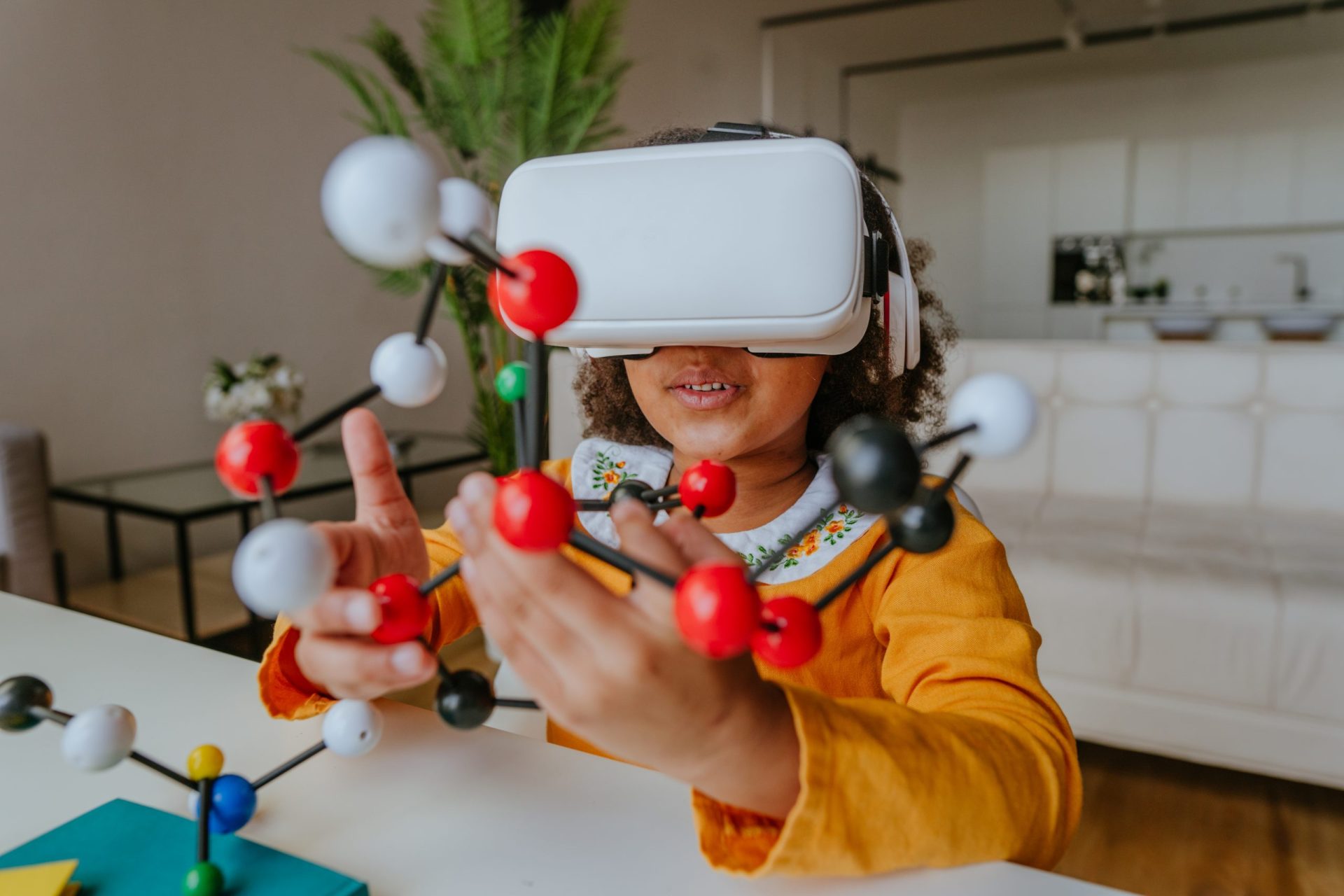Virtual reality replaces traditional education methods and provides an interactive learning experience.
According to research, the global VR in the eLearning market:
- reached over $103 million in 2020,
- and will increase to $929.71 million by 2028.
No educational institution or instructor cannot ignore these numbers. VR technologies hold significant opportunities for future generations.
What is Virtual Reality?
Before everything, we need to understand what virtual reality is.
Well, virtual reality refers to a three-dimensional, computer-generated setting. This technology utilizes the most advanced computer technology to build this simulated environment.
When users enter this virtual space, they become part of the environment or immersed within. In other words, VR puts the user inside an experience. Rather than viewing a screen, users engage and interact with 3D worlds. For example, when the user turns their head, the graphics respond thusly. Thus, they feel that they are really in this environment. Moreover, this virtual space simulates many different senses such as vision, hearing, touch, even smell.
When we think of VR technologies with eLearning, it gets much more interesting. To understand better, let’s look at the benefits of VR in eLearning.
The Benefits of VR in eLearning
Learning in a cooperative VR environment offers many benefits.
Here are some examples of such advantages:
VR enables learners to continue education anywhere, anytime. Just like online learning, you can access VR technologies through devices with an Internet connection. At home or on the road, students can learn whenever available.
VR enhances the learning experience. VR learning requires problem-solving and decision-making processes. Moreover, using advanced visualization improves the learning experience.
VR connects theory with practice. When learners study from a textbook, they memorize specific concepts and forget quickly. However, participating in this theory in an interactive 3D setting offers students a unique experience to remember.
VR encourages group work. It is much easier in VR to collaborate and work together. Therefore, instructors support teamwork using VR. Eventually, that increases student participation and attendance in classes.
VR encourages diversity among learners. Learners with disabilities or coming from various ethnic backgrounds learn together using unrealistic digital avatars. That reduces the possibility of discrimination among peers and in the overall educational process.
VR enhances digital communication. These advanced technologies allow students to interact with instructors just like in real life. This model is the nearest option to face-to-face communication.
VR reduces educational costs. Anyone can directly access educational content and virtual space through a device with an Internet connection. Therefore, VR eliminates the costs such as transportation, textbooks, or accommodation.
VR integration reduces distractions. Compared to other technologies like mobile devices, tablets, computers, VR technologies provide a much more realistic learning environment that holds the student’s attention longer.
How to Use VR (Virtual Reality) in eLearning?
There are various possibilities to utilize VR technology in eLearning. Here are some examples of such usages:
Experiential Learning
The experiential learning model implies a learning process via first-hand experience. Learners can gain knowledge and skills through real-like practices of concepts and ideas instead of book reading or lecture listening.
Social Learning
We all know that a successful learning process requires social interaction. VR technologies are a game-changer in this sense. Through VR, learners can interact with other users and instructors using digital avatars. Moreover, eye contact and body language are also possible.
VR Study Groups
Even though online learning creates discussion environments through online forums, video calls, or chats, they are not sufficient. Students need face-to-face communication or something similar. Here, VR enables students to meet in virtual worlds to discuss in groups.
Create Simulations of Real-life Experiences
Immersive technologies like VR create engaging and effective training simulations. These enable students to learn in these virtual 3D environments, feeling like they are in the real world. This way, learners understand concepts easier and quicker.
Gamification Technologies
Gamification is the new trend in the online world. VR allows educators to integrate games into eLearning and make teaching more engaging and fun. This technology also helps improve retention rates.
Customized Learning Path
VR technologies enable eLearning platforms to personalize online courses for different learners. That’s vital since every student’s needs and expectations vary enormously. Here, VR supplements theoretical knowledge with hands-on experiences, facilitating learning.
To incorporate VR technologies into your online education, use the best VR-compatible LMS platforms. Here, Vedubox can help you transform your education into an eye-capturing visual world.
For more information, read our related articles:
VR technologies are the new emerging trend in the eLearning industry. They improve the learning experience to the maximum efficiency and quality.







